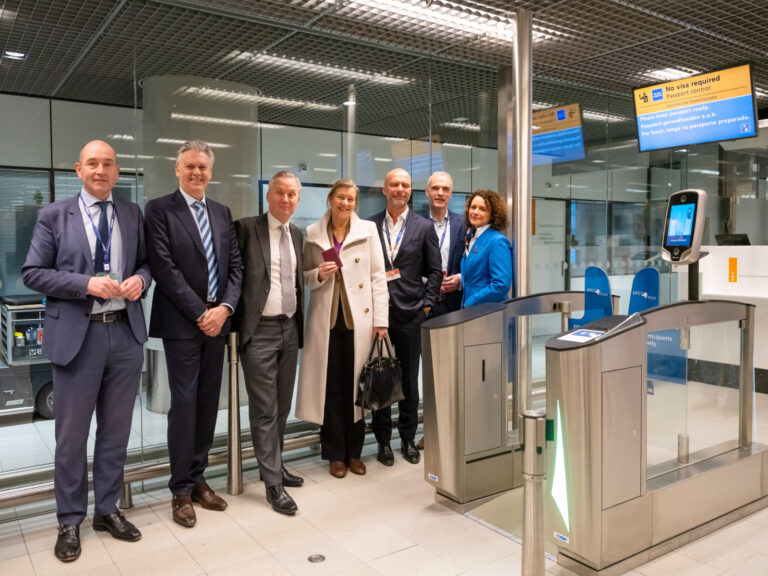On February 29, flight KL672 from Montreal landed at Amsterdam Airport Schiphol carrying passengers who used the Digital Travel Credential (DTC) to guide them through border checks.
The flight was part of a pilot project running until March 31 to examine how the DTC1 (a copy of the digital information contained on the chip of the passport) works in combination with facial recognition at border checks. At the request of the European Commission (EC), the pilot project is being conducted by the Dutch Ministry of Justice and Security, the Ministry of the Interior and Kingdom Relations and the National Office for Identity Data in cooperation with the Royal Netherlands Marechaussee, Amsterdam Airport Schiphol, KLM and technology provider Idemia.
The EC issued the request to test the use of the DTC in practice in the border process, and is currently developing policies for the use of a digital travel document, which could enable the use of the DTC for boarding and border control in the future.
The DTC1 technology standard was issued by the International Civil Aviation Organization. The DTC1 contains information from the biographical page of the passport (name, first name, etc), supplemented by some technical elements to establish that the information was indeed obtained from an authentic passport. A key feature of the DTC1 is that this information should always be used in conjunction with a physical passport. Travelers only need to tap their passport on a reader and walk through.
Passengers flying KLM from Canada (Calgary, Edmonton, Toronto, Vancouver and Montreal) to Amsterdam are eligible to participate in the pilot project, as long as they hold a Belgian, Dutch or Canadian passport and are over 18 years of age. They receive an email invitation from KLM to participate. Passengers can upload their passport information at home using an app, combined with a facial photo, facilitating early checks by the border control authorities before they arrive at Schiphol. Upon arrival at Schiphol, participants pass through a special DTC Tap & Go border gate. Based on a facial scan, the DTC is engaged. Participants then hold their passports against the border gate reader. If there is a match between the DTC and the passport presented and no irregularities emerge from previous checks, the border can be crossed. A physical passport is still required for the pilot project. Expectations are that this will speed up the border process for travelers.
For more security news, please click here.

